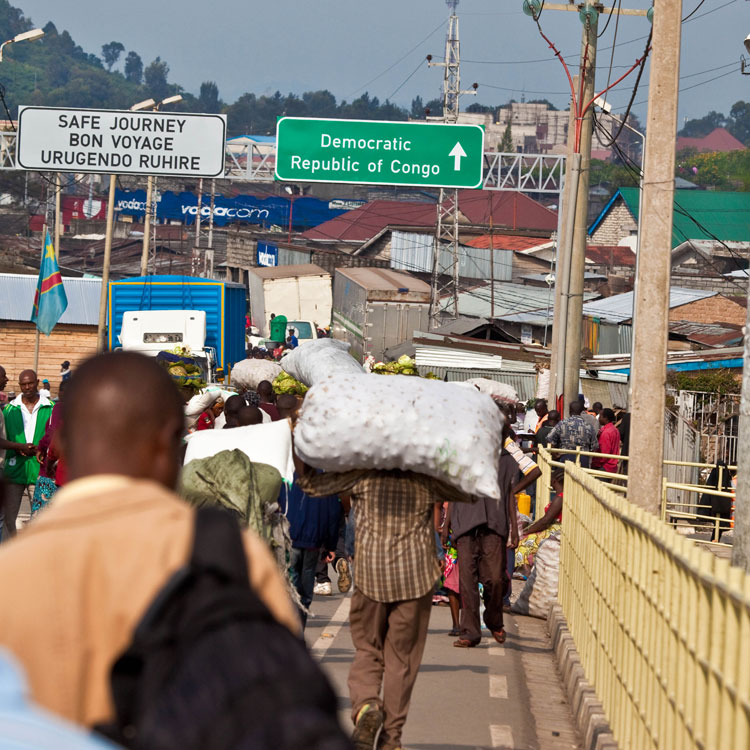While While the dialogue of the EAC/COMESA/SADC (East African Community/Common Market for Eastern and Southern Africa/Southern African Development Community) private sector proceeded with the usual jargon-laden international trade lingo in Kigali recently, all the time, energy, and money should instead have focused on one lady.


While While the dialogue of the EAC/COMESA/SADC (East African Community/Common Market for Eastern and Southern Africa/Southern African Development Community) private sector proceeded with the usual jargon-laden international trade lingo in Kigali recently, all the time, energy, and money should instead have focused on one lady. Her name is Mukamurenzi. In her letter regarding Rwanda’s export deficit (The New Times January 28, 2015), she hits the nail on the head when she points out the usual scapegoat of these conferences about the status of our regional trade and related matters.
Mukamurenzi cites the scapegoat of non-tarriff barriers in this particular instance. In addition, she rightly argues that we need to get back to the drawing board.
This is what one would expect from a meeting of private sector top honchos. Yet what emerged could as well have been from an academic workshop for disseminating findings of a study on factors limiting intra-continental trade in Africa.
My workmate Milly calls it a lamentation litany, not much different in content and sophistication from a lower high school economics coursework answer: lack of power, poor infrastructure, cultural beliefs and traditions, pests and diseases…! Voilà.
We have argued it before, but will repeat it here, since the problem persists: trade is a function of production.
Simple. However harmonised the rules of origin, or non-tariff, and even tariff barriers, however smooth the highways, and however swift the bullet trains, the starting point is production. And not merely production par hasard, but planned, harmonised, production in all key sectors of the regional economies.
Our regional integration benchmarks the European Union in structures, policies and rules, but does not dig deeper to see what makes the EU tick. Right from the early days of the European Economic Community (EEC), the EU’s integration process was a planned evolution, with legislation and rules building on existing economic activities. Either at national or supra-national levels, production preceded legislation. And this production cut across all levels of industrialisation, from basic resource-based to high technology industrialisation.
A few cases are instructive here: Airbus, that pinnacle of human ingenuity and innovation, is what can be described as a truly European brand. Its components are produced at four specialised sites in four countries, namely France, Germany, Spain, and United Kingdom. Each site manufactures specific components, which are then shipped to the assembly lines in Germany, France, and Spain.
The Euro-tunnel is a joint venture between Britain and France, dating back to days even when the two were jostling over colonies and influence in Africa. Oil giant Royal Dutch Shell, is another example of supranational investments that preceded the legalities and paper integration (see the pun?) we now witness in our Regional Economic Communities (RECs).
The corporate world must take the lead
It was then US Secretary of State Hillary Clinton who simplified it all a few years back. Meeting African ministers of trade at Kenyatta International Conference Centre in Nairobi, she asserted that Africa must trade with Africa.
The one billion souls on the continent make a market enough for Africa to trade with herself. And a week after, one European ‘analyst’ published a commentary that is the exact replica of what our corporate gurus from EAC, COMESA and SADC were doing in Kigali recently.
Taking the case of a village woman from Busia Uganda ‘smuggling’ beans into Busia Kenya, the international trade expert poured his heart out for this poor woman whose ‘informal cross-border trade’ faces hurdles of multiple and non-harmonised rules, non-tariff barriers and gender-insensitive customs officials.
See the plot, with the sentimental garnishing? This is the standard narrative that even corporate leaders have picked.
It is time for a paradigm shift. The very first lesson I learnt on joining a Kenya-based multinational in export sales was that the business world speaks only one language: specifics, facts, and figures, commonly referred to as SFF.
This is the language we want to hear next time such a high-level meeting of our regional economic blocs sits. We want a script reading thus:
"…We recently commissioned the Economic Policy Research Centre at Makerere University, Kampala to conduct a survey on key economic grow imperatives across EAC, COMESA, SADC and ECOWAS/CEDEAO. We found that the only trade between EAC giant Kenya and ECOWAS giant Nigeria is Nigerian movies, and occasional agbadas…yet these are the two pillars of the eastern and western axes of Africa, respectively.
"The Inga Dam in the DR Congo only needs each country in Africa contributing 0.7 per cent of its annual budget for three years to generate all the power Africa needs.
"In Agriculture, planned zoned production will see us meet our food needs in excess to afford export, while the motor industry in Kenya, South Africa, Egypt, and Nigeria suffices. All in all, we can meet 98.2 per cent of our needs through supranational production and trade…this is the way to go…”
The author is a partner at Peers Consult Kampala and CET Consulting, Kigali.
bukanga@yahoo.com


